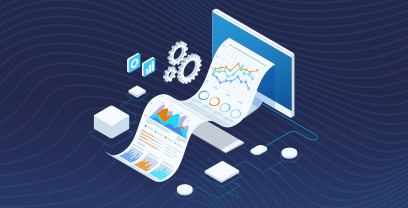Purchase-to-Pay (P2P), sometimes called Procure-to-Pay (P2P), is a process in business management that encompasses the entire lifecycle of procuring goods and services, starting from the initial purchase decision to the final payment to the supplier. The P2P process is integral to an organization’s procurement and financial operations and it’s time to streamline your Procurement process!
Effective P2P processes streamline purchasing activities, enhance financial management and foster strong supplier relationships. They can lead to cost savings through better negotiation with suppliers, improved inventory management and timely payments, as well.
P2P ensures better compliance with financial regulations and internal policies by standardizing procedures and providing clear audit trails. Organizations benefit from valuable insights into spending patterns, supplier performance and potential areas for cost reduction – information that can be pivotal for strategic decision-making and overall financial planning.
Let’s take a deep dive into P2P and explore the challenges that a modernized approach to P2P processes can solve.
Source-to-Pay vs. Purchase-to-Pay: What’s the difference?
While Source-to-Pay (S2P) and Purchase-to-Pay are both integral components of the procurement process, each process has a distinct focus and scope.
S2P is a comprehensive process that begins with identifying and selecting suppliers, and continues through sourcing and contract negotiation. It also includes all the subsequent purchasing activities and encompasses the strategic elements of procurement, such as supplier relationship management and market analysis.
So, what is Purchase-to-Pay? It’s a subset of the broader S2P process, concentrating specifically on the transactional phase of procurement. This includes the steps from the initial purchase requisition through to the final payment, covering order management, receiving, invoice processing and payment execution.
While S2P provides a holistic view of procurement from sourcing to payment, P2P focuses on the operational aspects of the purchasing process and paying for goods and services.
Key Steps in the Purchase-to-Pay Process
These following steps in the Purchase-to-Pay process ensure efficient, transparent and effective purchase to payment activities:
- Requisition: First, a business identifies the need for a product or service. Once the need is identified, a purchase requisition details the specifics of the required goods or services – including quantity, specifications and delivery timeline – is created and submitted.
- Approvals: The purchase requisition is reviewed by decision makers to ensure that the request aligns with the organization’s budget, needs and policies.
- Order creation: After approval, the procurement team selects a suitable vendor and negotiates terms. They issue a purchase order (PO) to the vendor, which serves as a formal agreement for the purchase.
- Receiving (and Inspection): The receiving department checks delivered goods or completed services against the PO and verifies quality and accuracy.
- Order approval and dispatch: Before payment, there’s typically a three-way match between the purchase order, the goods/service receipt and the supplier’s invoice to verify that the invoice accurately reflects the goods or services received.
- Invoice approval and processing: Once the invoice is verified, it’s approved for payment.
- Payment: The finance department processes the payment according to the terms, and records all documents related to the transaction for accounting purposes. This data is crucial for financial reporting, budgeting and analyzing spending patterns for future procurement strategies.

Each step in the P2P process plays a critical role in ensuring effective procurement, financial accountability and maintaining strong supplier relationships. Modern organizations often leverage digital tools and purchasing software to automate and streamline these steps, enhancing efficiency and reducing the potential for errors.
Challenges & Pitfalls in P2P
According to Deloitte’s 2019 Global Chief Procurement Officer Survey, 61% of respondents feel that procurement-related risks have risen over the past 12 months. Modernizing the Purchase-to-Pay process is an essential step to reducing risk.
What are some of the pitfalls? A lack of process standardization and automation, for starters, which can lead to inefficiencies, errors and processing delays. Another significant pitfall is inadequate communication and coordination between departments. Poorly defined roles and responsibilities can lead to confusion, duplicated efforts or bottlenecks, particularly in organizations where the procurement, finance and receiving departments operate in silos. This lack of integration can also result in a failure to leverage volume discounts or optimize inventory levels.
Failure to adhere to internal controls, regulatory standards or contract terms can lead to legal and financial repercussions. Additionally, the P2P process is vulnerable to fraud and cybersecurity threats, especially in the case of sensitive financial data and transactions. Finally, inadequate supplier management can lead to poor service quality, supply chain disruptions and overdependence on specific suppliers.
All of these challenges can impact an organization’s bottom line and operational effectiveness – and overcoming them requires a modern and automated approach.
Benefits of Automating Purchase-to-Pay
Automating the Procure-to-Pay process can significantly enhance the efficiency, accuracy and strategic value of procurement and financial operations in an organization. Automation eliminates time-consuming, manual tasks like data entry and document matching, enabling staff to focus on more strategic tasks instead.
Automated procure-to-pay software provides real-time visibility into the entire procurement process, enabling decision-makers to track the status of purchase orders, monitor spending and analyze supplier performance. This promotes effective financial planning and compliance. By streamlining the P2P process, organizations not only reduce labor costs, identify cost-saving opportunities and avoid late payment penalties by ensuring timely payments.
Importantly, automated purchasing software improves supplier relationships, thanks to efficient order processing and timely payments, as well as self-service portals where suppliers can check on the status of their invoices, reducing the need for frustrating back-and-forth communication.
Modernizing the Purchase-to-Pay Process
In addition to automation, the evolution of the P2P process will be influenced by emerging technologies and changing business practices. For example, Generative AI in procurement can be used to generate POs based on predictive analysis or tailor procurement experiences to specific user needs by learning from past behaviors. AI-driven data analysis will make accurate demand forecasting and improved inventory management possible, while enabling autonomous interactions with suppliers to streamline negotiations.
Additionally, Generative AI will bolster risk management and compliance monitoring, by identifying potential issues and recommending solutions. Integrating AI with technologies such as blockchain could further enhance transaction security and transparency, particularly in contract and payment processing.
Future P2P evolution will likely focus more on strategic supplier relationship management. Leveraging data and analytics, companies will aim to build more collaborative and mutually beneficial relationships with suppliers, forming and nurturing long-term partnerships. There will also be a stronger focus on sustainability and ethical sourcing as companies take into account the environmental and social impact of their procurement decisions.
P2P processes are expected to become more tightly integrated with other business systems and functions, as well, including Enterprise Resource Planning (ERP) and Customer Relationship Management (CRM), providing a more holistic view of the business and improving cross-departmental collaboration. And, as P2P processes become more digitized and data-driven, ensuring the security and privacy of transactional and supplier data will be critical.
Purchase-to-Pay Best Practices
Here are some best practices to consider when modernizing your approach to P2P:
- Implement standardized procedures across the P2P process to reduce errors and inefficiencies, and invest in automation to streamline operations.
- Improve communication and collaboration between departments through regular inter-departmental meetings, clear documentation of procedures, and shared performance metrics. Use collaborative tools and platforms to facilitate better coordination.
- Establish strong internal controls and compliance mechanisms to mitigate legal and financial risks. Conduct regular training sessions for staff on compliance standards.
- Implement advanced cybersecurity measures to protect sensitive data and transactions from fraud and breaches.
- Develop a strategic approach to supplier selection and relationship management to address supply chain risks, including regular performance evaluations, supplier diversification and open communication for continuous feedback.
- Track key performance indicators (KPIs) using analytics tools to identify bottlenecks, spending patterns and opportunities for cost savings.
By employing these strategies, organizations can significantly enhance the efficiency, accuracy and effectiveness of their P2P process.
Simplify the Complexities of Purchase-to-Pay with Ivalua
Streamlining the labor-intensive tasks involved in P2P processes can deliver huge benefits to your organization, including reduced costs, improved productivity and stronger supplier relationships. But choosing the right solution is critical.
Ivalua’s purchase-to-pay solution can help you digitize your P2P process rapidly, with built-in configurations and industry-leading flexibility. Learn why Ivalua was named a leader in the Gartner Magic Quadrant for Procure-to-Pay Suites 2022.
You may also want to check out a live demo of our purchase-to-pay solution.




